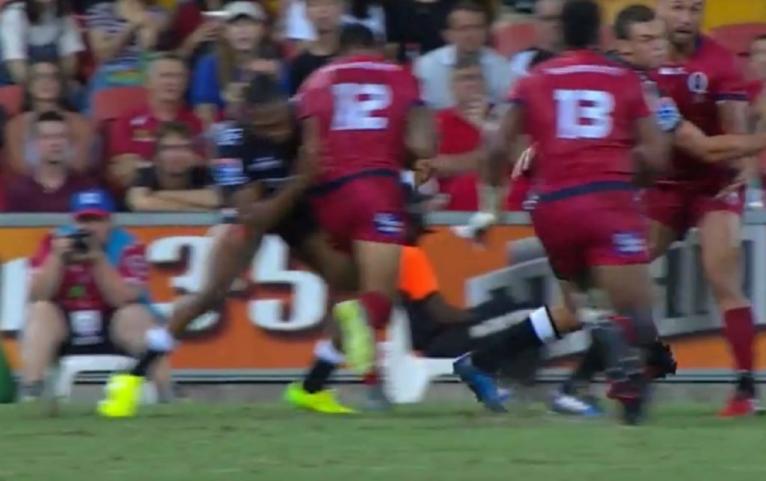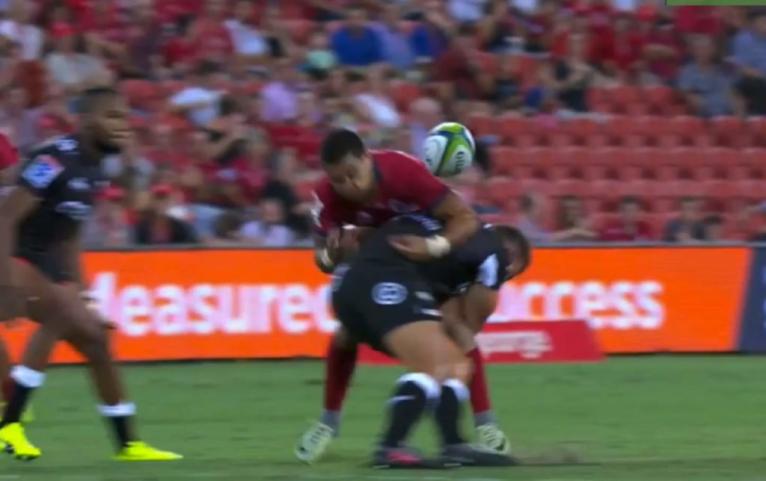Analysis: Did Quade Cooper 'struggle' last season? Part One

Queensland Reds head coach Brad Thorn has revealed his decision to dump mercurial playmaker Quade Cooper was due in part because he ‘struggled’ in attack, game management and defence last season.
The public outcry of the axing has been swift. Fans, ex-players and media in Australia have all been critical of the decision. However, is their merit to Thorn’s assertion that he ‘struggled’?
Breaking down the game tape we look at the 29-year-old flyhalf to qualify Thorn’s claims in this two-part analysis – first looking at set-piece attack and then open phase play and defence.
Set-piece attack
The Reds marquee recruit instantly became the centerpiece of the Reds set-piece attack, with the majority of plays running off 10 as the key decision maker and ball player. This gave Cooper the maximum amount of opportunities to influence the game.
Even for an adjustment so basic, this was a major improvement for the Reds strategically.
Set-piece attack was nearly non-existent in the previous few years under Richard Graham due to a tactic around playing for scrum penalties. The Reds strength in scrummaging became overkill, where nearly every feed was trapped at the back. The tactic would slow the game, starve the backs and often backfire against them given how subjective scrum reffing can be.
With Cooper back, the Reds playbook opened up and we saw a much more expansive side. Something was amiss though – sloppy execution and questionable play calling were common throughout the season.
Quade in the middle of this as the key cog was made to look amateur but he is not the only one to blame.

Here against the Force late in the season, the Reds have a mid-field scrum. Karmichael Hunt (15) initially lines up behind the scrum as a two-way bet, enticing the Force to do the same with one of their defenders.

The Force leave only two defenders on the open side giving the Reds a potential four-on-two situation if Hunt swings around as illustrated above. If Cooper can beat the halfback the Reds have a massive opportunity.
What ensues is either a lack of effort by Hunt, miscommunication or extremely poor play design.
Samu Kerevi (13) runs an ‘unders’ line, cutting back against the grain and Hunt meanders out the back aimlessly. Cooper ends up with only two possible options – Kerevi on a short crash ball or Nabuli wide on a cutout pass.

Both of these options fail to create an overlap or exploit the short numbers – Kerevi will run into contact and a cutout pass to Nabuli this early would allow for the defence to slide.
Karmichael Hunt jogs through the play, never becoming a viable option. It’s never clear what his intended route is meant to be.
When Cooper delivers his no-look pass to Kerevi, Hunt is 6-8 metres behind the play (circled). If he was coming around the corner behind Kerevi (superimposed), Cooper would have a back-door option to potentially open up the Force on the edge.

Instead, Cooper’s head fake fools no one and his pass to Kerevi is correctly ruled forward.
Cooper’s pass goes down as an error and a turnover but it is the cherry on top of a busted play and an illustration of the Red’s lack of thoroughness – running a play with a man not involved for no reason.
Against the Sharks in the first round, the Reds were offered the same attacking midfield scrum, this time only five metres out. This time the play calling is questionable and leads to a similar situation.

The Sharks will cover the Reds four open side players with three sliding defenders (two out of picture) and the halfback breaking off to cover 10.
If Cooper can get to or engage the first defender circled above, he will create an overlap and put the defence under pressure. He gets wide enough and does so.

The Reds run one of their standard ‘crash’ plays, with the 13 dropping under 10 and 12 sliding out.
The problem with using this play in this situation is Kerevi (13) effectively becomes a ‘dead’ option. With Cooper taking it to the line looking to hit someone running into a hole, Kerevi’s route takes him out of play leaving Paia’aua as the only flat option.
As Cooper releases his pass, Kerevi (circled) is in no man’s land – effectively removed from the play. Dropping the ball underneath is only going to result in Kerevi running into contact and trying to break tackles to score.

If the play called for Kerevi to hold a straight line and run into space (superimposed), he gives Cooper another option and forces the defenders into two decisions. He will either run in untouched or open up the hole for Paia’aua provided Cooper makes the right read.
The Sharks deliberately knock down the short pass to Paia’aua and the Reds receive a penalty but miss an opportunity for five points.
The man Cooper tries to hit flat, Paia’aua, is an easy read for the Sharks and would have never got through anyway.

What makes this play call even worse is the Reds had already tried it 10 minutes earlier with the same result, again in a great attacking position on the 22 but didn’t learn the lesson.

Summary
The Reds opened up the playbook and looked to strike more from the set-piece last year but struggled to make a break or score, often turning the ball straight back over.
These two examples were selected because they illustrate one of the Reds main issues at set-piece – the failure to use numbers efficiently to attack space.
When you try to run strike plays that require exquisite timing and understanding from three or four players, you need a high level of chemistry that wasn’t there last year.
In fairness to Cooper, the backline was foreign to him. He had only played a handful of games with Kerevi and Hunt, and it was Paia’aua’s first full season starting at 12.
They tried to play around Cooper as a playmaker but it was below par but it is unfair to say that it was solely his fault.
Where I believe Thorn couldn’t trust Cooper anymore will be revealed in part two looking at phase play and defence.

































































